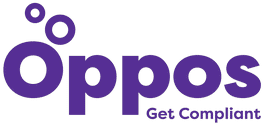In the world of cybersecurity and regulatory compliance, SOC and SOX are two terms that are often used interchangeably, but they are actually two distinct compliance frameworks. Understanding the difference between SOC and SOX compliance is crucial for any organization that deals with sensitive customer information. SOC compliance refers to Service Organization Controls, while SOX compliance refers to the Sarbanes-Oxley Act. Both frameworks set standards for companies to protect sensitive information, but they differ in their scope, purpose, and implementation.
In this article, we will explore the key differences between SOC and SOX compliance to help you determine which one is right for your organization.

What is the difference between SOC and SOX controls?
When it comes to information security and compliance, two acronyms often come up: SOC and SOX. While both relate to controls designed to protect against unauthorized access, fraud, and data breaches, they have distinct differences.
SOC, or Service Organization Control, reports are conducted by third-party auditors to assess a company’s internal controls and processes related to financial reporting, data privacy, security, and other compliance areas. These reports are not required by law, but many companies opt to have them to show customers and stakeholders that they have strong controls in place.
SOX, or Sarbanes-Oxley, is a law that requires public companies to establish and maintain internal controls over financial reporting and to have those controls audited by an independent auditor. SOX is specific to financial reporting and accountability, and the audits are mandatory for publicly traded companies.
In summary, SOC controls are generally voluntary and report on a variety of compliance and security controls, while SOX controls are mandatory and report specifically on financial controls for publicly traded companies. It’s crucial to understand the differences between these two types of controls to ensure compliance and maintain security.
What is SOX compliance
SOX, or the Sarbanes-Oxley Act, is a federal law that was enacted in 2002 as a response to accounting scandals like Enron and WorldCom. The main goal of SOX is to protect investors and ensure public companies are transparent in their financial reporting.
SOX compliance refers to the process by which companies must adhere to the regulations outlined in the law. This includes implementing internal controls and procedures for financial reporting, ensuring the accuracy of financial statements, and establishing a system for whistleblower reporting.
SOX compliance is taken very seriously by regulators, and companies that fail to comply can face significant penalties, including fines and even criminal charges. It is important for companies to understand their obligations under SOX and take the necessary steps to ensure compliance.
Benefits of SOX Compliance
SOX compliance comes with several benefits that trickle down to both the company and its investors. Firstly, SOX compliance ensures that financial statements are fair and accurate, giving investors more confidence in the company. Secondly, SOX compliance requires clear communication channels between management and auditors, allowing for more transparency and trust.
Thirdly, SOX compliance gives companies an opportunity to streamline their internal controls and processes, which ultimately leads to cost savings and improved operational efficiency. Fourthly, SOX compliance reduces the risk of legal penalties resulting from a failure to comply with accounting standards.
Overall, SOX compliance has numerous benefits for companies, including better financial reporting and transparency, improved efficiency, and reduced legal risks. It is therefore important for publicly traded companies to prioritize SOX compliance to ensure long-term success and build trust with investors and stakeholders.
Who does SOX compliance apply to?
SOX (Sarbanes-Oxley) compliance applies to publicly traded companies in the United States. These companies are required to comply with the Sarbanes-Oxley Act of 2002, which was enacted in response to corporate accounting scandals such as Enron and WorldCom. The purpose of the act is to improve financial transparency and accuracy in corporate governance.
Under the act, companies are required to establish internal control over financial reporting and must periodically test and evaluate the effectiveness of these controls. Additionally, companies must comply with specific disclosure requirements, such as disclosing all material off-balance sheet transactions and relationships with related parties.
SOX compliance also applies to the external auditors of publicly traded companies. These auditors are required to report on the effectiveness of the company’s internal controls over financial reporting.
What is SOC compliance?
In the world of information security, SOC compliance is a critical certification that organizations obtain in order to demonstrate their commitment to data protection and risk management. SOC stands for Service Organization Controls, and compliance refers to an organization’s adherence to the established standards and protocols for these controls.
SOC compliance is the result of a rigorous auditing process that examines an organization’s systems, processes, and policies to ensure that they meet the highest standards for data security, availability, and confidentiality. The audit process is typically conducted by an independent third-party auditor who evaluates the organization’s controls and provides recommendations for improvement.
There are several types of SOC compliance, each with their own specific focus. SOC 1 focuses on internal controls over financial reporting, while SOC 2 and SOC 3 focus on controls related to security, availability, processing integrity, confidentiality, and privacy. In addition, SOC for Cybersecurity is a newer certification that focuses on evaluating the effectiveness of an organization’s cybersecurity risk management program.
Benefits of SOC Compliance
Firstly, SOC compliance helps build trust with customers, especially those in regulated industries such as finance and healthcare, where data breaches can lead to severe consequences. It demonstrates that the service provider is committed to protecting sensitive information.
Secondly, SOC compliance can be a powerful marketing tool, as it provides a competitive advantage over non-compliant companies. It also reduces the likelihood of security incidents, which can harm reputation and result in financial losses.
Finally, SOC compliance provides a valuable opportunity to identify and address potential security weaknesses. Through regular audits, service providers can continuously improve their security posture and ensure that they are keeping up with the latest security threats and vulnerabilities.
Overall, SOC compliance has become a critical aspect of doing business in today’s digital landscape. The benefits it provides, including increased customer trust, competitive advantage, and improved security posture, underscore why service providers should prioritize SOC compliance.
Who does SOC compliance apply to
SOC compliance standards are not legally mandated, but they are essential for the success and stability of many businesses. SOC compliance applies to any organization that provides services to another organization and wants to assure them that its systems and processes are secure. This includes, but is not limited to, service organizations such as healthcare providers, financial institutions, and technology companies.
The specific type of SOC compliance required depends on the nature of the services provided by each organization. For example, service organizations that handle financial information must adhere to SOC 1 or SOC 2, while those that handle confidential information like healthcare data need to comply with SOC 2. It is important to determine the type of SOC compliance required based on the services provided, as this ensures both compliance with regulatory requirements and the fulfillment of client or customer expectations.
Overall, SOC compliance is an essential aspect of risk management for organizations that deal with sensitive data. As cyber threats and data privacy concerns heighten, it is imperative to ensure that adequate controls and compliance measures are in place to mitigate these risks.
Understanding the Key Differences between SOC 1, SOC 2, and SOC 3
How Can Oppos Help with SOX and SOC Compliance
As companies continue to grow and evolve, they must also meet the regulatory requirements set forth by governing bodies such as the Securities and Exchange Commission (SEC) and the American Institute of Certified Public Accountants (AICPA). The two most commonly mentioned requirements in this context are the Sarbanes-Oxley Act (SOX) and Service Organization Control (SOC) compliance.
At Oppos Cybersecurity, we understand the importance of maintaining compliance with these regulations and the complexities that can arise in their implementation. We offer a range of tools and services that can help organizations achieve and maintain SOX and SOC compliance.
Our team is well-versed in the requirements of both SOX and SOC and can provide guidance and support in meeting these requirements. We provide ongoing monitoring and assessment services to ensure that your systems and processes remain compliant and effective.
In addition, our comprehensive reporting capabilities provide you and your stakeholders with the necessary documentation to demonstrate compliance and instill confidence in your organization’s financial health.
Partnering with Oppos can provide your organization with the expertise and resources necessary to maintain compliance with SOX and SOC requirements, helping you mitigate risk and enabling you to focus on your core business objectives.
Conclusion
In conclusion, while SOC and SOX compliance share some similarities, they are distinct in their requirements and objectives. SOC compliance focuses on the controls and processes used to safeguard customer data and enhance transparency, while SOX compliance focuses on financial reporting and accountability. Enterprises must carefully consider the regulatory framework that applies to their business and determine the appropriate steps to achieve compliance.
Our team of cybersecurity experts at Oppos can help you navigate the complexities of compliance. Contact us today for a consultation and subscribe to our newsletter for more helpful cybersecurity tips and insights.
Don't wait – secure your data with Oppos' SOC Compliance
SOX vs SOC Compliance FAQs
SOC 2 and SOX have different scopes, objectives, and reporting requirements. While SOC 2 does address some of the same controls and processes as SOX, it is not a substitute for SOX compliance. However, organizations that have undergone SOC 2 audits may find that some of the requirements overlap with SOX compliance. In such instances, the SOC 2 reports can provide useful information, particularly to SOX auditors, on how the company manages critical IT operations and controls.
The short answer is that there is no official certification process for SOX compliance. Instead, companies are responsible for self-assessing their compliance with the regulations and providing evidence of their compliance to their auditors, who then provide an opinion on the effectiveness of the company’s internal controls. This opinion is included in the company’s annual report, which is made public.
The responsibility for conducting these audits falls on independent certified public accounting firms that are registered with the Public Company Accounting Oversight Board (PCAOB).
While the responsibility ultimately lies with management, there are several individuals and departments involved in the process. The finance and accounting departments are typically responsible for designing, implementing, and monitoring internal controls, with input from auditors and other key stakeholders.
In addition, company executives and the board of directors play a vital role in SOX compliance, as they are responsible for ensuring that controls are functioning properly and that any deficiencies are addressed in a timely manner.
Although SOX compliance is often managed by a separate team or unit within an organization, internal auditors are responsible for evaluating the effectiveness of internal controls and determining whether they are SOX-compliant. Therefore, while SOX is not part of an internal audit, it is an essential consideration for internal auditors as they perform their responsibilities.






